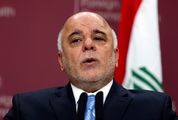China takes steps towards liberalising bank deposit rates
by Agency staff,
2013-09-26 14:25:55.0
BEIJING — China will allow banks to price loans based on market-based benchmark rates and will allow banks to launch certificates of deposit soon to pave the way for liberalising bank deposit rates, the central bank said on Thursday.
Chinese leaders are seeking to steer the world’s second-largest economy towards a growth model that relies more on domestic consumption and want to gradually allow market forces to play a greater role.
"We will steadily push forward market-oriented interest rate reforms," Hu Xiaolian, a vice-governor of the People’s Bank of China, said in a speech published on the central bank’s website.
Mr Hu said these were near-term tasks but did not give a time frame.
The central bank will expand market-oriented benchmark rates from the money market to credit markets and organise big banks to offer lending rates to their high-quality clients to set the benchmark borrowing costs for the industry.
In July, the PBOC scrapped the floor on lending rates but banks still price their loans based on the benchmark rates when they make loans. The one-year official rate stands at 6%.
The decision to remove the floor on bank lending rates was seen as a largely symbolic prelude to eventually removing caps on deposit rates, a much more difficult task that will take time.
The issuance of certificates of deposit on the interbank market and expansion of market-based pricing of debt products would "create conditions for steady and orderly liberalisation of deposit rates", Mr Hu said.
The central bank, under the helm of reform-minded Zhou Xiaochuan, has been trying to promote the role of the Shanghai interbank offered rate (Shibor) as the benchmark for short-term borrowing costs, now that money-market rate are largely determined by market supply and demand.
Sources said in August that China’s top banks were expected to win approval for the issuance of tens of billions of yuan in negotiable certificates of deposit (NCD).
NCDs would enable banks to access large amounts of funds at relatively stable costs, providing some alternative to borrowing from the interbank market, where the cost of funds can be volatile — as seen in June, when a liquidity squeeze briefly sent short-term money market rates to nearly 30%.
The central bank has said more preparations, including a deposit insurance scheme, are needed before a move on deposits. Analysts said its caution also reflected concern that freeing up deposit rates would squeeze banks’ profits.
Reuters
BEIJING — China will allow banks to price loans based on market-based benchmark rates and will allow banks to launch certificates of deposit soon to pave the way for liberalising bank deposit rates, the central bank said on Thursday.
Chinese leaders are seeking to steer the world’s second-largest economy towards a growth model that relies more on domestic consumption and want to gradually allow market forces to play a greater role.
"We will steadily push forward market-oriented interest rate reforms," Hu Xiaolian, a vice-governor of the People’s Bank of China, said in a speech published on the central bank’s website.
Mr Hu said these were near-term tasks but did not give a time frame.
The central bank will expand market-oriented benchmark rates from the money market to credit markets and organise big banks to offer lending rates to their high-quality clients to set the benchmark borrowing costs for the industry.
In July, the PBOC scrapped the floor on lending rates but banks still price their loans based on the benchmark rates when they make loans. The one-year official rate stands at 6%.
The decision to remove the floor on bank lending rates was seen as a largely symbolic prelude to eventually removing caps on deposit rates, a much more difficult task that will take time.
The issuance of certificates of deposit on the interbank market and expansion of market-based pricing of debt products would "create conditions for steady and orderly liberalisation of deposit rates", Mr Hu said.
The central bank, under the helm of reform-minded Zhou Xiaochuan, has been trying to promote the role of the Shanghai interbank offered rate (Shibor) as the benchmark for short-term borrowing costs, now that money-market rate are largely determined by market supply and demand.
Sources said in August that China’s top banks were expected to win approval for the issuance of tens of billions of yuan in negotiable certificates of deposit (NCD).
NCDs would enable banks to access large amounts of funds at relatively stable costs, providing some alternative to borrowing from the interbank market, where the cost of funds can be volatile — as seen in June, when a liquidity squeeze briefly sent short-term money market rates to nearly 30%.
The central bank has said more preparations, including a deposit insurance scheme, are needed before a move on deposits. Analysts said its caution also reflected concern that freeing up deposit rates would squeeze banks’ profits.
Reuters



















Change: -0.47%
Change: -0.57%
Change: -1.76%
Change: -0.34%
Change: 0.02%
Data supplied by Profile Data
Change: -1.49%
Change: 0.00%
Change: -0.47%
Change: 0.00%
Change: -0.08%
Data supplied by Profile Data
Change: 0.48%
Change: 0.91%
Change: 0.38%
Change: -0.15%
Change: 1.05%
Data supplied by Profile Data
Change: 0.25%
Change: -0.21%
Change: 0.33%
Change: -1.22%
Change: -1.21%
Data supplied by Profile Data